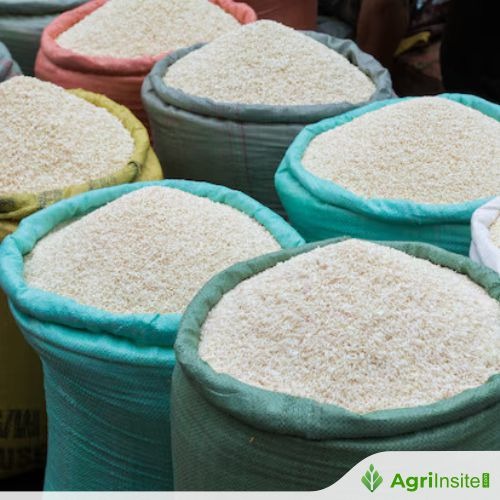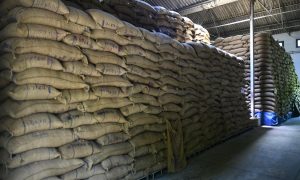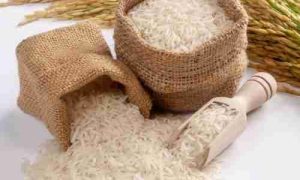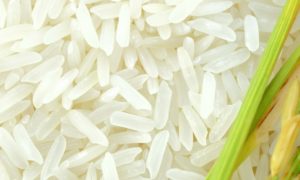Nigeria : Local rice mills under pressure as imported rice gains market share

Nigeria’s rice sector is struggling despite major investments. Local mills face high paddy and diesel costs, insecurity limiting farm production, and competition from cheaper imported and smuggled rice. Many mills operate below capacity or have shut down. The supply gap persists, keeping Nigeria dependent on imports and threatening food security and livelihoods.
Nigeria, Africa’s top rice producer, is facing a crisis in its rice sector. Despite billions of naira poured into local mills to boost production, many are shutting down or operating far below capacity. Policy gaps, infrastructure shortfalls, insecurity, and global market shocks are all weighing heavily, leaving farmers and consumers to bear the brunt and exposing deep vulnerabilities in the country’s agribusiness landscape.
The country consumes an estimated 7.7 million metric tonnes of milled rice annually, but local production supplies only slightly more than half of that demand. The resulting 3-million-tonne shortfall forces Nigeria to rely on imports and a thriving informal cross-border trade, which includes significant smuggling activity. Ironically, domestically produced rice, which should be more affordable, often sells at higher prices than imported alternatives. Consumers gravitate toward foreign rice, which is frequently better processed and packaged, even though it is considered less healthy.
As of May 2025, Nigeria had 268 rice mills, ranging from small, single-owner operations to large, integrated facilities affiliated with multinational companies. Kano State leads the country in the number of mills, with more than 68 integrated and medium-scale facilities, followed by Kaduna with 19 and Ebonyi with 16. Kebbi State houses two of Nigeria’s largest integrated mills: Labana and WACOT.
WACOT Rice Mill in Kebbi, with a production capacity of 120,000 metric tonnes, represents a N10 billion investment and has the potential to become Africa’s largest rice mill if its capacity is doubled. Ropo Atobami, an agricultural economist, emphasises that building such mills is capital-intensive. “Large facilities in Kano, such as Umza and Challawa, required billions of naira in investment. Gerawa Rice Mills alone cost roughly N15 billion to construct,” he says.
In Nasarawa State, Olam Nigeria Ltd invested over $111 million in mechanised rice farming and processing. Despite the scale of these investments, operators report severe challenges. Many small mills in Kebbi have already closed due to an unforgiving operational environment, while larger ones like WACOT, Labana, Lolo, Rayhaan, and Sajo operate only partially.
The difficulties stem from multiple factors including federal government import policies, rampant smuggling, high paddy costs, falling milled rice prices, farmer reluctance to return to the fields due to insecurity, and escalating daily operational expenses.
Government policy has played a role in undermining local rice production. During the tenure of former president, Muhammadu Buhari, policies aimed to ensure self-sufficiency by encouraging Nigerians to farm and supporting indigenous millers. However, selective import licenses granted to only two mills, Imota Rice Mill in Lagos and BUA Foods for Indian brown rice, have distorted market dynamics. Reports suggest that much of the imported rice is old stock from India, repackaged for sale domestically.
Alhassan Yusuf, general manager of Labana Rice Mill, says the selective policy discourages both farmers and millers. “Farmers are afraid of investing in inputs like fertiliser and fuel if they cannot get fair prices for their produce. Millers are losing billions of naira because they are forced to sell paddy at prices below production costs while competing with foreign rice,” Yusuf explains.
According to estimates, a rice mill producing over 100 trailers of rice, with paddy costs reaching N700/kg, may incur losses of N15,000–N20,000 per 50kg bag when forced to sell at depressed prices. Such margins are unsustainable and threaten the long-term viability of large-scale mills.
Security remains one of the most pressing challenges for rice production, particularly in northern Nigeria where the majority of paddy is grown. Banditry and communal conflicts deter farmers from returning to their fields, undermining both production and mill operations. Feyisayo Oke, an agriculturalist, underscores the link between security and food self-sufficiency: “No policy will succeed unless farmers can safely access their farms. Will bandits allow them? No. Security is the cornerstone of production.”
Energy supply is another key impediment. Following the withdrawal of fuel subsidies, rice mills rely heavily on diesel generators due to unreliable electricity. Small-scale operators spend roughly N700,000 per month on energy alone, a cost many cannot sustain. For large mills, energy costs, combined with high labour, maintenance, and input prices, significantly erode profit margins.
The rising cost of diesel, which nearly doubled between 2023 and 2025, has pushed up the cost of milled rice, making it less competitive against imported alternatives. Many mills, particularly smaller ones, have been forced to cease operations or run below optimal capacity, further tightening domestic supply.
Local rice production reached approximately 8.9 million metric tonnes of paddy in 2023, translating to around 5.2 million metric tonnes of milled rice, the highest output since 2010. Yet with domestic consumption at 7.7 million metric tonnes, a significant supply gap persists, necessitating imports of 3.6 million metric tonnes.
Projections indicate rising consumption. The Foreign Agricultural Service (FAS) estimates a 2.16 per cent growth in 2025, with consumption reaching 8.3 million metric tonnes by 2026. The AFEX Commodities Exchange, in its 2024 Crop Production Report, forecast a 2.6 per cent decline in output due to high fertiliser costs, pushing farmers toward alternative crops such as sesame and sorghum that require fewer inputs.
The USDA also predicted a downturn in Nigeria’s rice production, citing reduced access to farmland in conflict-prone areas, high fertiliser prices, and unrecorded cheaper imports undermining local paddy. In addition, a July 2023 Indian ban on non-basmati rice exports further constrained raw rice supply, leading to temporary shutdowns in Kano and other rice-producing states.
Smuggling remains a major challenge for millers. Large volumes of imported rice enter Nigeria unofficially, depressing prices for locally milled rice and discouraging farmer participation. Yusuf reports that while the Office of the National Security Adviser has started enforcement actions, the scale of illicit trade is significant, and its mitigation is crucial for the survival of local mills.
The Nigerian rice economy was valued at N2.5 trillion in 2018, up from N1.1 trillion in 2016, according to KPMG. The sector supports millions of jobs across farming, processing, and distribution. Its continued underperformance threatens both national food security and rural livelihoods.
Atobami argues that a holistic approach is essential. “The government must address security, power supply, input affordability, and smuggling simultaneously. Without coordinated interventions, even the most technologically advanced mills will remain underutilised,” he noted.
Despite these challenges, some mill operators remain optimistic. Labana and other major facilities continue partial operations, banking on potential policy corrections, anti-smuggling enforcement, and improved farmer engagement. Yet the preference for imported rice, alongside persistently high operational costs, remains a formidable barrier.
To Read more about Rice News continue reading Agriinsite.com
Source : Business AM















